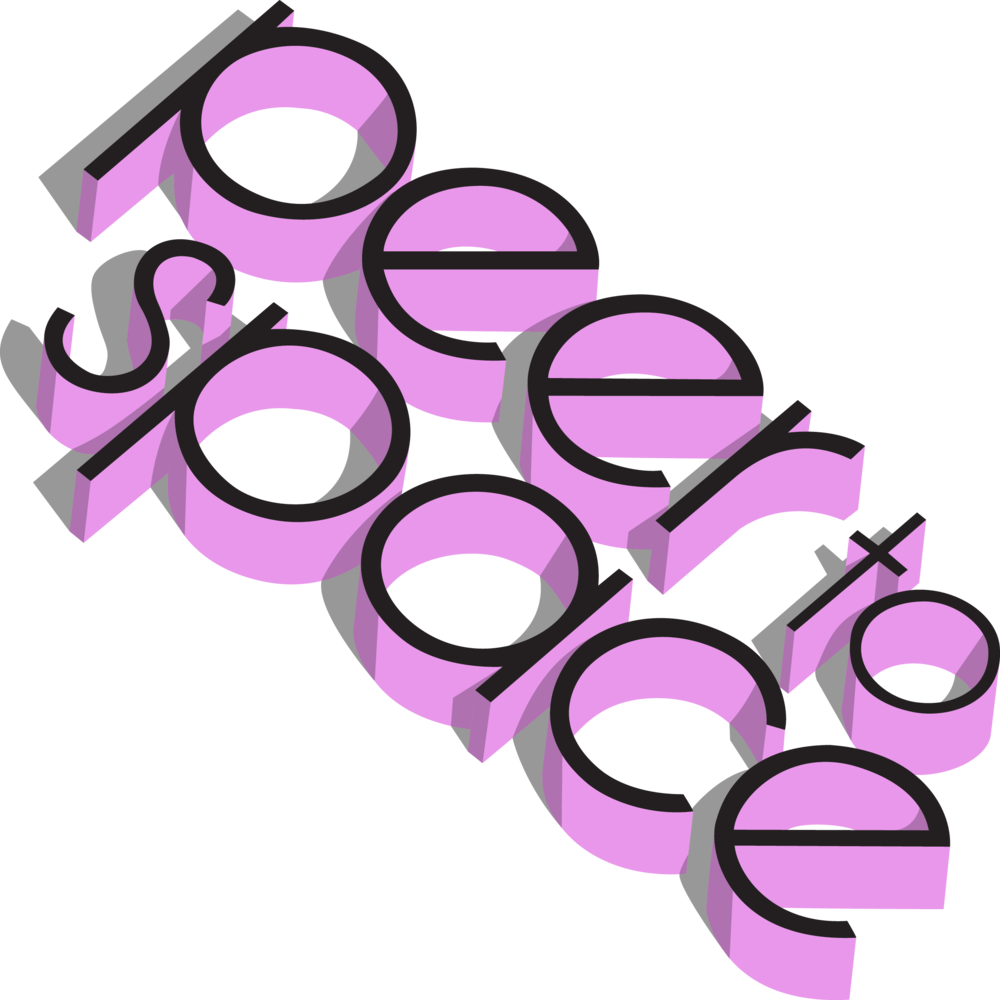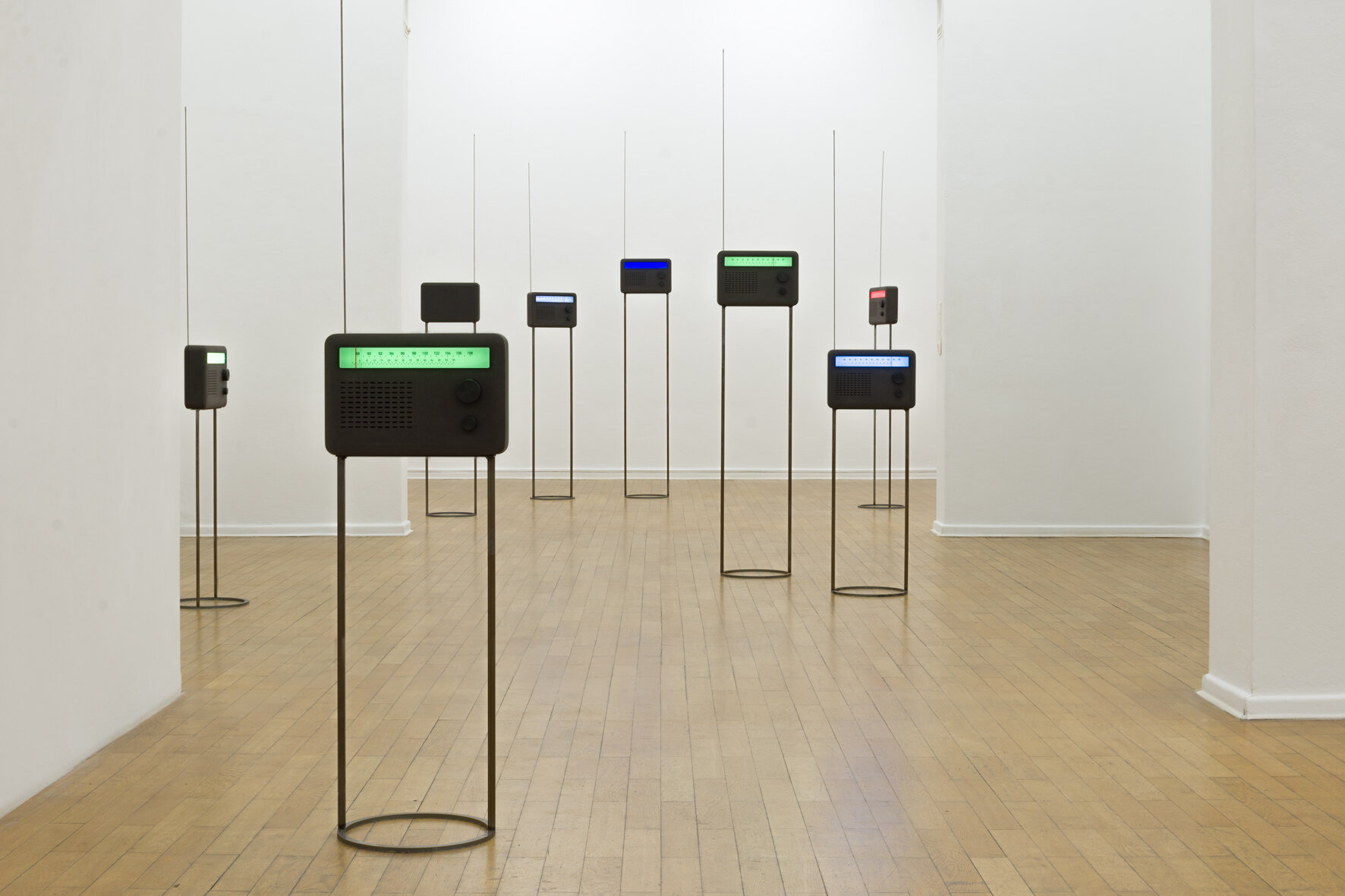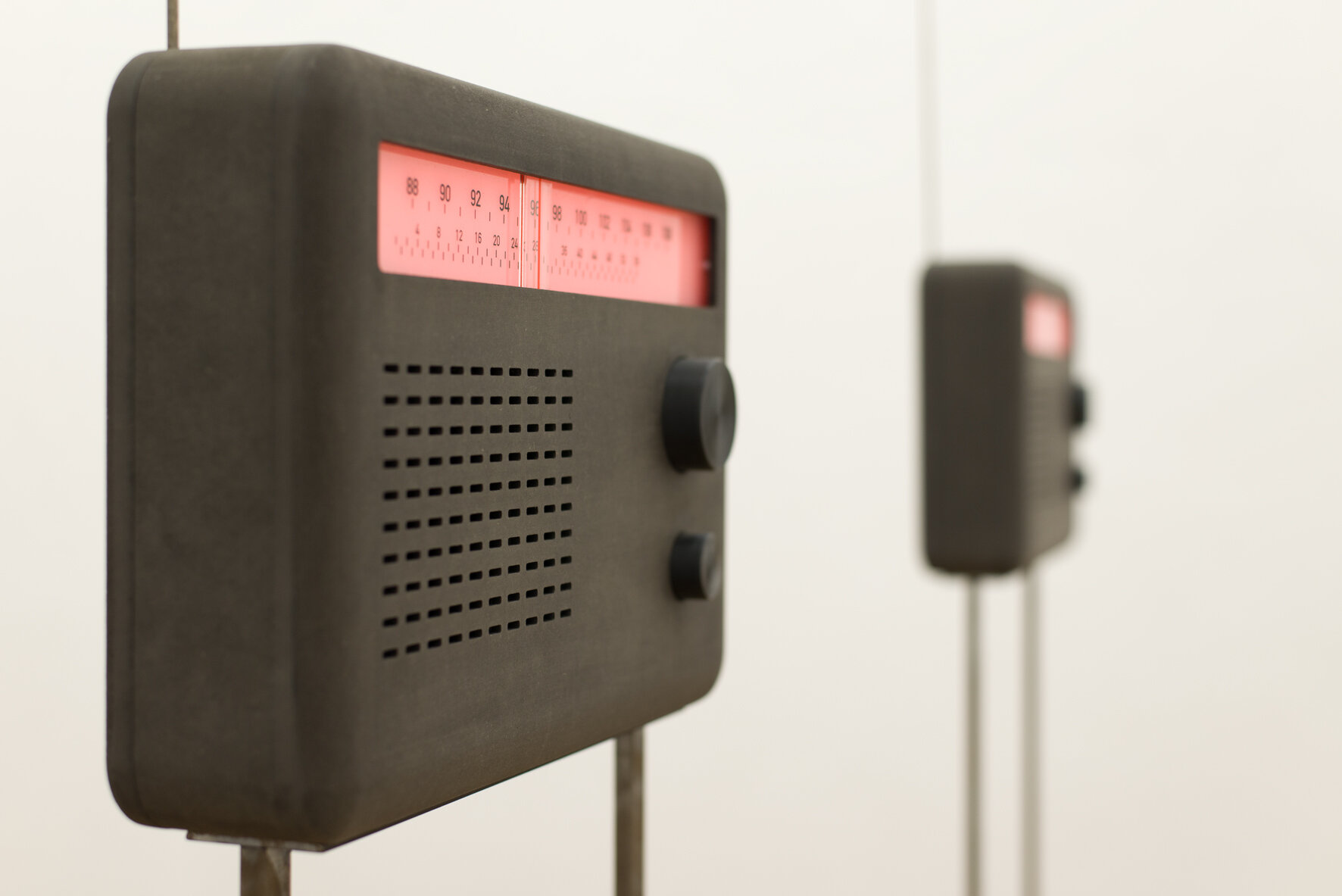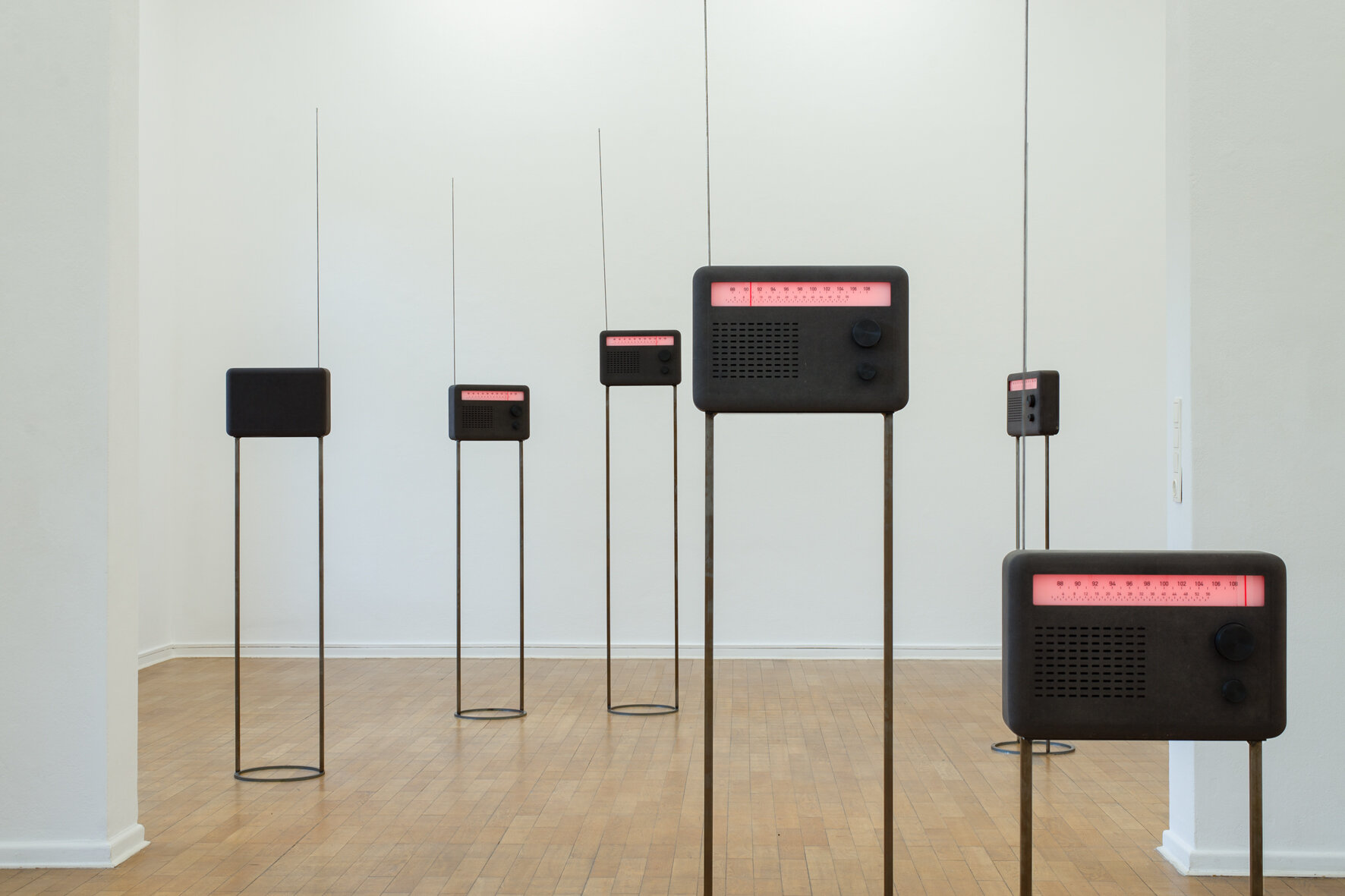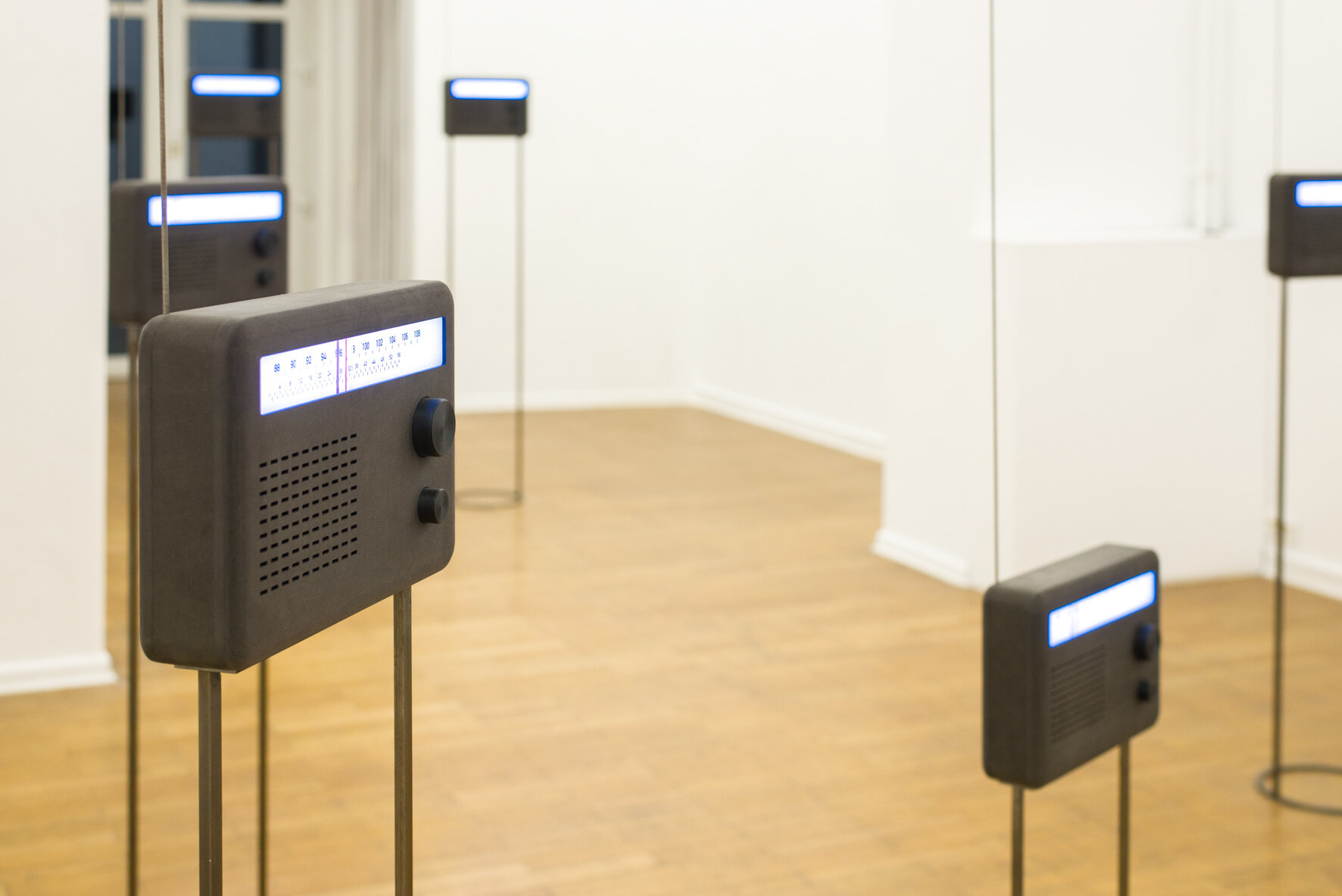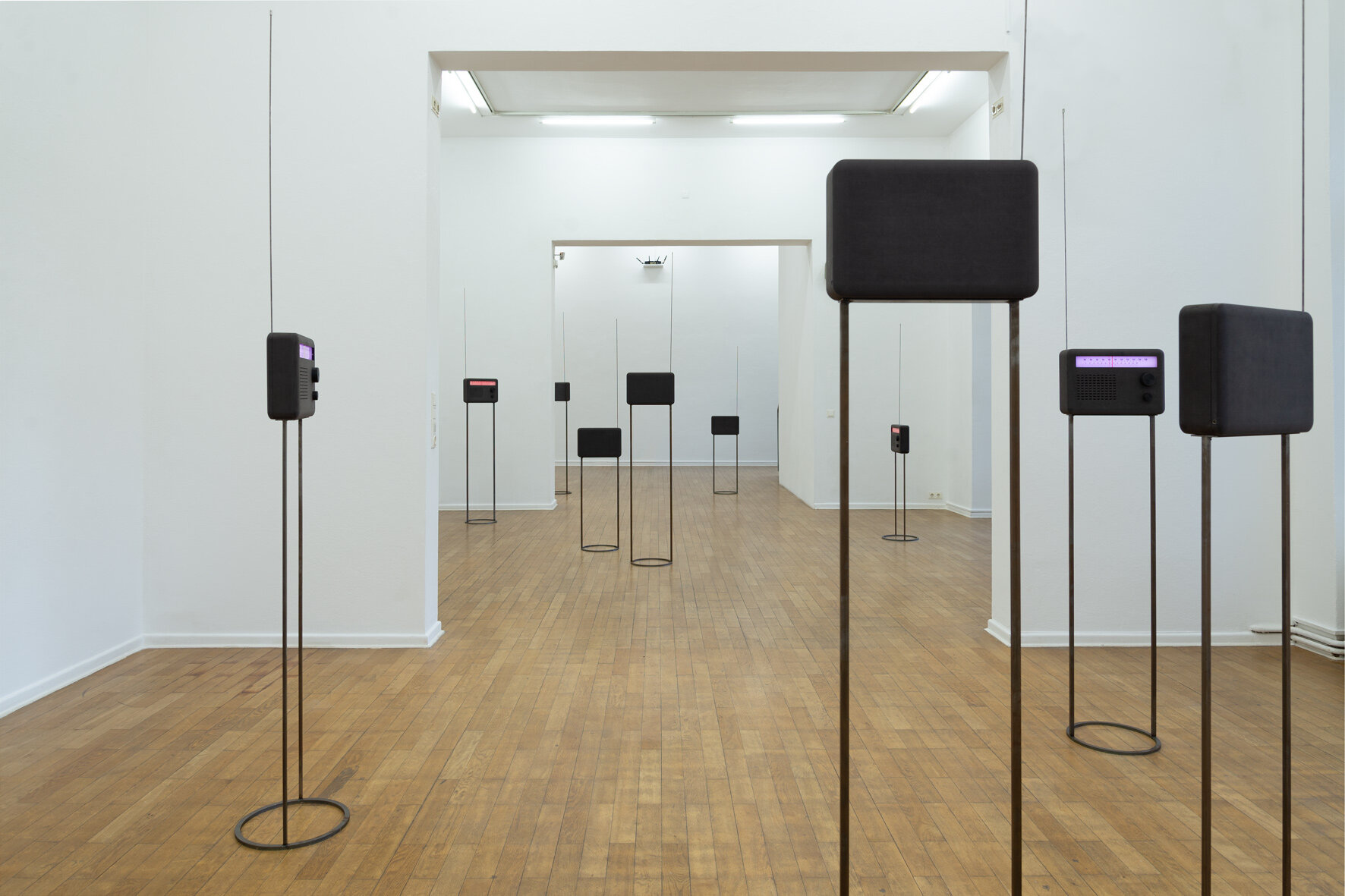RADIOSANDS - Thom Kubli
Curated by Tina Sauerlaender (peer to space)
August 23 to September 1, 2019
Haus am Lützowplatz, Berlin
We live in a filter bubble online. Algorithms sort through the daily flood of information so that we can select fragments to build our reality. Just as grains of sand, we assemble the pieces until they make sense as a whole. The Radiosands installation reflects the generation, distribution and perception of information in the digital age.
Radiosands is comprised of sixteen identical radios specifically designed for the installation. They float upon delicate pedestals as if on radio waves through the space. The audio fragments emitted from the radios are based on search results algorithms found in analog FM radio frequencies in the area. The search terms were predefined by the artists. They refer to political entities, emotions as well as perception and reflect life in today's society. Like Facebook’s algorithms, they select information to be heard on the radios in real time. Audio excerpts from various broadcasts come together simultaneously in the exhibition and create a spatial installation of sound. Sentence fragments from different sources form new meanings together. The installations of Radiosands are always site-specific, because the events taking place in the surroundings are transmitted via radio into the exhibition space.
Radio or Internet—despite the medium, all information is repetitively filtered until the receivers perceive it. The starting point is the intention of the senders, who decide on the content, formulation and channel. The selection of the medium, its range and distribution determine how visible the information will be to specific groups. The recipients’ selective perception and cultural imprint makes them more open to some information than to others. Out of the fragments they receive, they generate a meaningful narration of our reality.
How many building blocks do we actually need to make our reality convincing? And how truthful is it? These questions are reminiscent of world building in science fiction and fantasy literature. It describes the construction of an imaginary, holistic cosmos with many single components necessary for a consistent, credible world. The end product is what the artist Thom Kubli calls “granular reality.” In novels as in reality, it is important that we embed these small pieces of information in a narrative both coherent and consistent to make it ring true. We may then forget the single parts and see only the big picture, like sand on the beach.
Watch the exhibition video here.
The project is a collaboration between Thom Kubli with the research team of Dr. Sven Hirsch the Institute for Applied Simulation at the Zurich University of Applied Sciences.
Artistic Idea, Composition: Thom Kubli
Research Direction ZHAW: Dr. Sven Hirsch
Computer Language: Dr. Manuel Gil, Dr. Martin Schüle
Audio analysis: Prof. Dr. Thilo Stadelmann, Daniel Wassmer, Tobias Schlatter
Programming: Lydia Ickler, Norman Juchler
Technology and mechatronics: Florian Guist, Marek Olkusz
Assistant: Christian Maximilian Blasius
With the generous support of: Hauptstadtkulturfonds Berlin, Ernst Göhner Stiftung, Hasler Stiftung, Migros Kulturprozent, ZHAW (Zurich University of Applied Sciences), HeK Basel and Haus am Lützowplatz.
Special thanks to Speechmatics for making the Speech Recognition Engine available.
All images (c) J. Pegman, 2019
